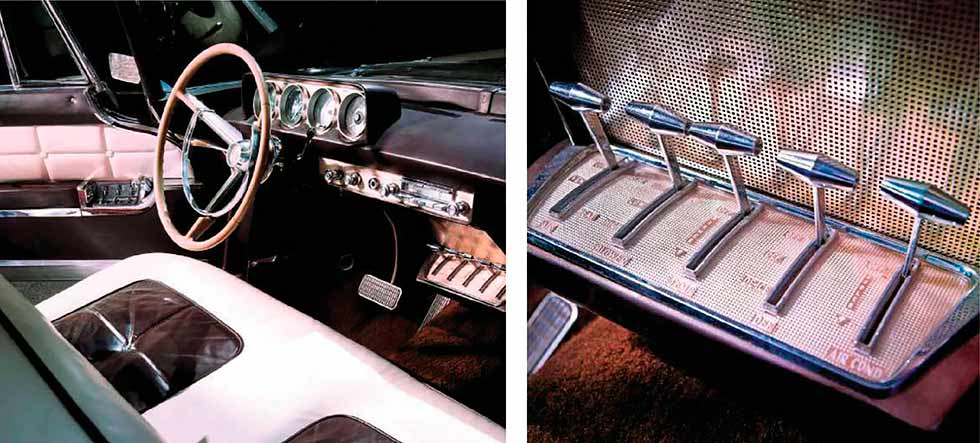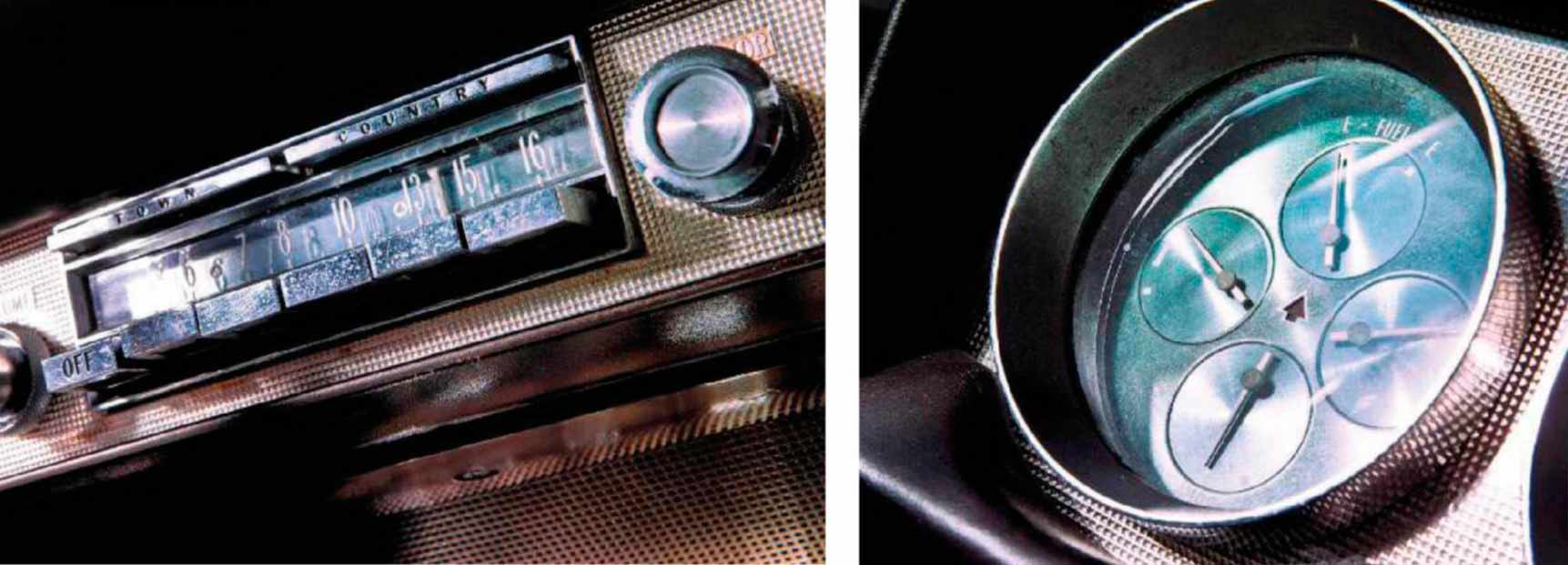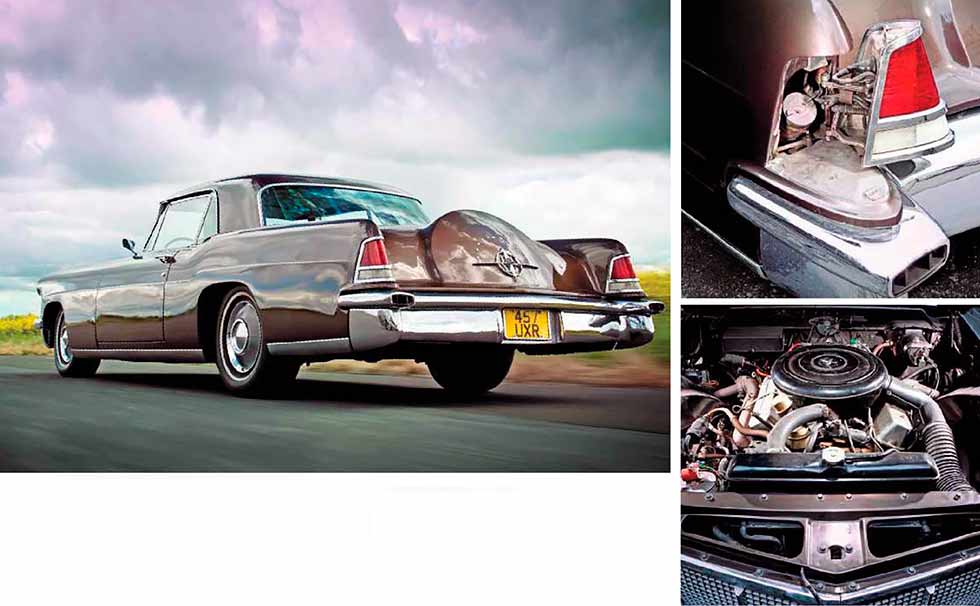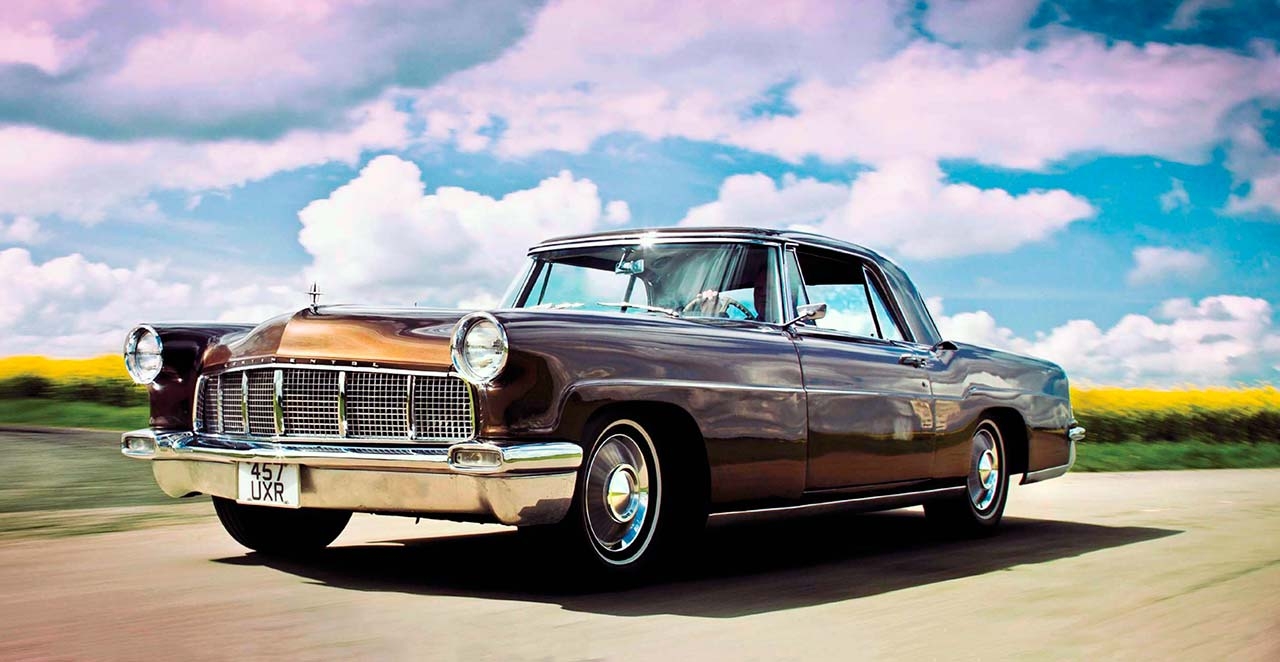
The Antithesian Dream. The Lincoln Continental MkII is the antithesis of how we see American cars. We sample its understated virtues in the Cotswolds. A rare beacon of taste in an sea of ostentatious chromery, the Continental MkII proved the existence of understated American elegance. We find out how well it translated European abilities. Words Andrew Roberts. Photography Charlie Magee.
The Lincoln Continental MkII are rare beacon of taste in a sea of chrome.
There are some cars that make highly entertaining attempts to appeal to the prospective owner’s inner snob; the Vanden Plas 1500 ‘Allegro’ and the 1975 Chrysler Cordoba, with its ‘thickly-cushioned luxury of seats available even in rich Corinthian leather’, both come to mind. Then there are those vehicles that seem to naturally exude class and one such is the Lincoln Continental Mkll, which was intended to be a ‘functional, enduring design, emphasising an air of distinction and elegant simplicity’. That the Conti more than succeeded in these goals is more than apparent when looking at Fredrick Folkestad’s rare 1956 example.
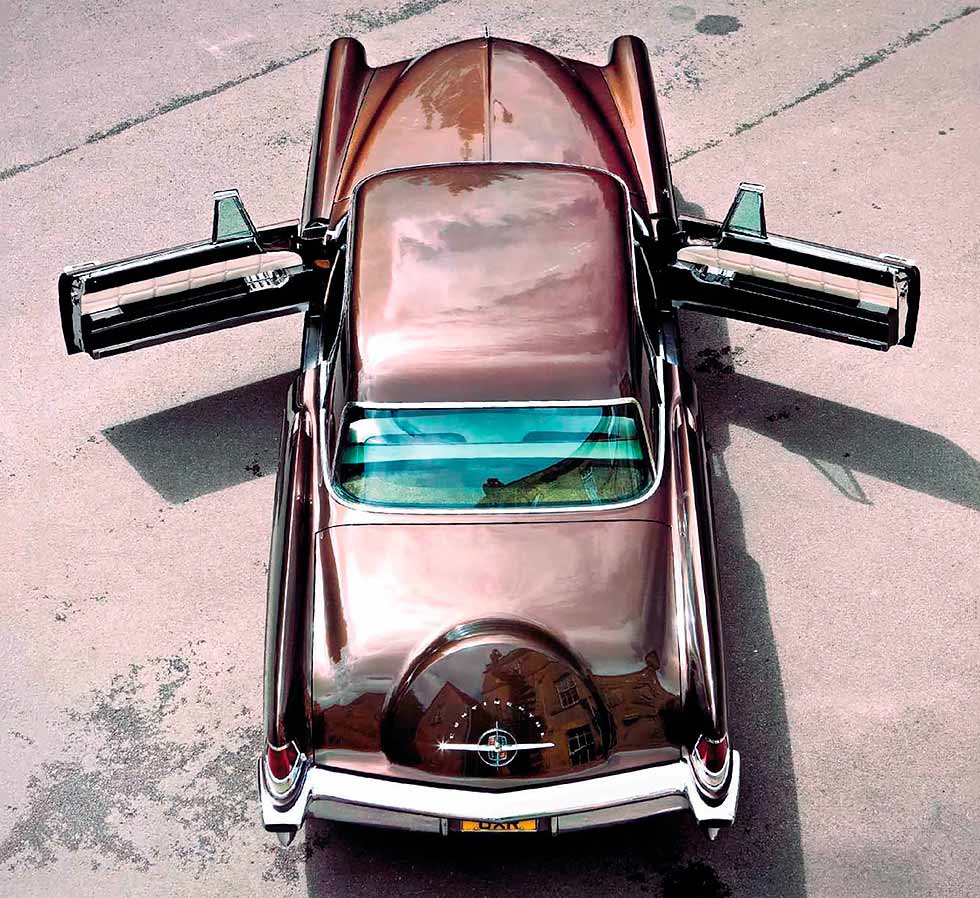
With Sinatra’s Who Wants to Be a Millionaire? playing in my head, it’s time to fully immerse myself the decadent world of the Continental. Such are its balanced proportions that its sheer scale does not become apparent until I’m stood next to it. The Mkll is also extremely sleek and I could well understand why some US drivers of larger-than-average build complained of difficulties concerning access and egress – but this is a mere quibble.
Before meeting the Folkstadt Midi, my dominant image was derived from the film noir masterpiece The Sweet Smell of Success, in which Burt Lancaster’s New York journalist anti-hero drives a Continental while wearing a fedora at an evil angle. Without even attempting to compare myself to a cinematic icon, looking at the MkII’s dashboard evokes fantasies (well for me at any rate) of embarking on a night-time drive along Fifth Avenue, listening to the AM radio en route to a rendezvous with Tony Curtis.
Naturally, a car that was at least partially intended to transport a leading actor from the East Coast to Los Angeles looks faintly incongruous on British roads. Yet bringing a touch of Manhattan to the Cotswolds is a highly enjoyable, if surreal, experience and MkII feels progressively smaller with every mile. There’s never any sense of the wallowing you might have reasonably expected with a US car of this era, while the noise – or rather the lack of it – is quite remarkable. The Continental may initially seem to be at home on the motorway but thanks to excellent weight distribution it does not lumber around corners. Aimed at an owner who would undoubtedly wish to enjoy his Continental during the summer vacation in The Hamptons, the MkII’s power steering system really allows the driver to feel the road. The Turbo-Matic transmission, in addition to boasting a brilliantly Fifties name, is perfectly suited to the V8 engine and the braking proves that not all drums have to be ineffective. The windscreen feels unusually close to the front seat; this was apparently a deliberate design detail to make the owner feel like an integral part of the car.
Above all, the Continental MkII gives its occupants the feeling that they are gliding above the tarmac, waiting for the right moment for the take-off – a sense reinforced by the aircon vents above their heads. Even the controls for the heating and climate control system give the impression that the Lincoln is primed for a trans-Atlantic flight, rather than merely operating the demister. ‘The Continental Mark Two is a subtle, yet flawless, reflection of your taste,’ stated the advertisements – and it’s indeed pleasant to have basked in its reflected glory for a short while.
In the late Fifties, the brochure claimed that the Continental was ‘aristocratic but in a quietly modern way’, which perfectly summarised its appeal. Looking at the MkII today, those rear wings could barely be classed as tailfins and even if the rear decklid’s spare wheel protuberance is a slightly over-the-top detail, the overall effect remains understated, suave and highly elegant. It is a vehicle of a multifaceted appeal combining the soignée looks of your transport for an evening on Broadway followed by dinner at The Copacabana. Inside, the décor that has the formal qualities of a company chairman’s office while the dashboard appears to have been borrowed wholesale from a Douglas DC-7. Modern-formal was how the factory described the Continental and that remains the perfect choice of words.
The MkII identity derives from the fact that it was the second Ford product to bear the Continental badge. The original Lincoln- Zephyr of 1939 was inspired by Henry’s son Edsel, who asked Eugene T ‘Bob’ Gregorie, Ford’s head of design, to create a drophead with ‘continental’, European-inspired style. The result was put into production for the 1940 model year and rapidly established itself as the definitive set of wheels for the Palm Beach set. But when the first generation of post-war Lincolns debuted in 1948 there was no new Continental because it was deemed not to fit with the image of the new line-up.
Four years later Dearborn’s management commissioned in-depth market research that identified a major weakness in its product line-up – Ford competed strongly against Chevrolet and Plymouth but had comparatively little to rival GM’s more expensive lines. The result was Mercury being more strongly positioned as a Buick alternative and the re-introduction of the Continental. Ford’s Special Products Office, headed by Edsel’s son William Clay Ford, was established to develop this halo model.
The styling was by designer John Reinhart, and the MkII would not share any underpinnings with other Lincoln models, with a ladder-type box perimeter frame employing Y-shaped bracing. Power was from the new 368ci V8 that was also fitted to the 1956 Lincoln Premiere and to ensure the smoothest possible ride, the new Continental was equipped with automatic speedcompensating and temperature-sensitive shock absorbers.
A plant in Michigan was dedicated to virtually hand-building the MkII with multiple coats of paint, while the chrome trim was given a ten-day salt spray test. Running gear was evaluated prior to installation and each Continental was given a road test before it was despatched to the dealer; factory workers were encouraged to be extra vigilant in all matters of quality control. Any engines deemed not to comply with the Continental’s standards were said to be shipped to Lincoln for use in its lesser models.
Meanwhile, the marketing types applied a coating of Wildroot hair cream, adjusted their ties and set to work, placing stories about the revival of the Continental name in the press and enquiring of film stars what their requirements were for a new car. Finally, in October 1955 at the Paris Motor Show, the Continental MkII was unveiled with the gloriously tacky spectacle of a white show car revolving on a turntable beneath a scale model of the Eiffel tower. It was an approach slightly out of keeping with the ethos of the ‘Continental Division’ – as Special Products was now known – because its promotions for the MkII highlighted that it was the epitome of taste and discretion.
The Continental was sold via Lincoln dealers even though it was not badged as such, and the list of standard fittings included power assistance for the brakes, steering, front seat, windows and even the quarterlights, in addition to whitewall tyres and an AM radio with, naturally, a power antenna. If that wasn’t enough the owner could have his (it would have probably been ‘his’ in late-Fifties USA) name engraved on a nameplate in the passenger footwell, and the upholstery was of leather imported from Bridge of Weir of Scotland or a selection of cloth trims. The sole option, as fitted to the Folkestad Continental, was air conditioning; anyone with the means to buy a Continental MkII would probably be able to raise the further $595 required to become even cooler.
To put such luxury into some form of historical context, across The Pond in 1957 it was possible to buy a brand-new Ford 103E Popular devoid of indicators, a heater, a passenger windscreen wiper and even a boot floor. But then Continental was ‘designed and built for a particular person in mind – the man of inherent taste and good judgment’. To ensure the showrooms were only visited by prospective owners of the right calibre, viewings to see the Continental were by invitation only and owners included Frank Sinatra, Elizabeth Taylor, Elvis Presley, Dwight Eisenhower, Nelson Rockefeller and the Shah of Iran. Ford even refused to indignify the MkII by assigning cars with a designated model year – the only time it has done so in its entire history. The Continental’s timelessness isn’t limited to its styling.
The Continental’s exclusivity was further ensured by the price tag. At $9695 it cost more than two Lincoln Premiers or a quartet of Ford Fairlanes – the air-conditioned 1957 model’s price tag of $10,430 translates to $91,236 today.
The MkII’s closest domestic rivals also arrived in 1955, in the form of the Imperial – a separate Chrysler marque – and the Caribbean, the last of Packard’s independent designs. Both had a different appeal from the MkII, the former being some $2000 cheaper and having the solidly respectable air of a senior corporate lawyer while the latter was handsome but decidedly flamboyant with its tri-tone paint finish. As for General Motors, a Cadillac 62 cost a staggering 50% less than the Continental, but then that didn’t appear with Grace Kelly in High Society.
In 1957 Cadillac launched its nearest rival, the $13,074 Eldorado Brougham Series 70. By that time Ford had become a publicly-traded company and the MkII’s future seemed to be in doubt. The Continental division had merged with Lincoln-Mercury in July 1956 and the last MkIIs were built on May 8 1957.
Ford may not have found the Continental to be a financially successful product in terms of mere dollars but it could never be considered a folly. It should be remembered that for years Corvette created a loss for General Motors and, as with the MkII, that was a car that more than fulfilled its brief to add lustre to every model built by the parent company.
It could well be argued that the Continental was as much a victim of corporate politics as it was to its exclusive price tag – it lacked the support of both Ford’s Whiz Kid champion of the compact Falcon, Robert McNamara, and the head of the Lincoln division. A four-door hardtop and a convertible would have almost certainly further enhanced the appeal of the MkII but as it was, 1958’s MkIII was a rather different and extroverted offering that was closely linked to the existing Lincoln range. It would not be until 1961’s fourth-generation version that the name would re-establish itself as the car of the Kennedy era.
On leaving the Continental MkII it strikes me that it was a car of but not in the Fifties. It was launched at a time when even the cheapest US family sedans reflected an age of a consumer confidence, a time when virtually every brochure seemed to boast an ‘O-matic’ device. But the MkII largely eschewed gimmicks and it was never intended to be an ostentatious display of its owner’s affluence. The air of rectitude of the Continental is in keeping with the grand tourers in the tradition of the Cord 810, the Duesenberg Model J and the Auburn Speedster. At launch 62 years ago, Ford considered that it had created an alternative to a Rolls-Royce but that is to undersell a fine machine. It is a Continental MkII – and therefore has nothing else to prove.
TECHNICAL DATA FILE SPECIFICATIONS 1956 Lincoln Continental MkII
Engine 6029cc ohv V8 with a Holley four-barrel downdraft carburetor
Power 285bhp @ 4800rpm Torque 402lb ft @ 3000rpm / SAE
Transmission Three-speed automatic
Brakes Power-assisted drums all round
Steering Recirculating ball with power assistance
Suspension Front: independent, upper and lower control arms with coil springs and temperature-sensitive dampers; Rear: live axle with semi-elliptic springs and temperature sensitive dampers
Weight 2189kg (4825lb)
Performance Top speed: 115mph; 0-60mph: 14.4sec
Fuel consumption 10mpg
Price new $10,430 USA 1956 (£3740 UK 1957)
Values now $50,000-$70,000 USA 2017 (£38,500-£55,000 UK 2017)
‘Modern-formal was how the factory described the MkII and that remains the perfect choice of words’
